Bibimbap, a beloved Korean dish, is traditionally known for its vibrant mix of vegetables, proteins, and rice, all topped with a flavorful gochujang sauce.
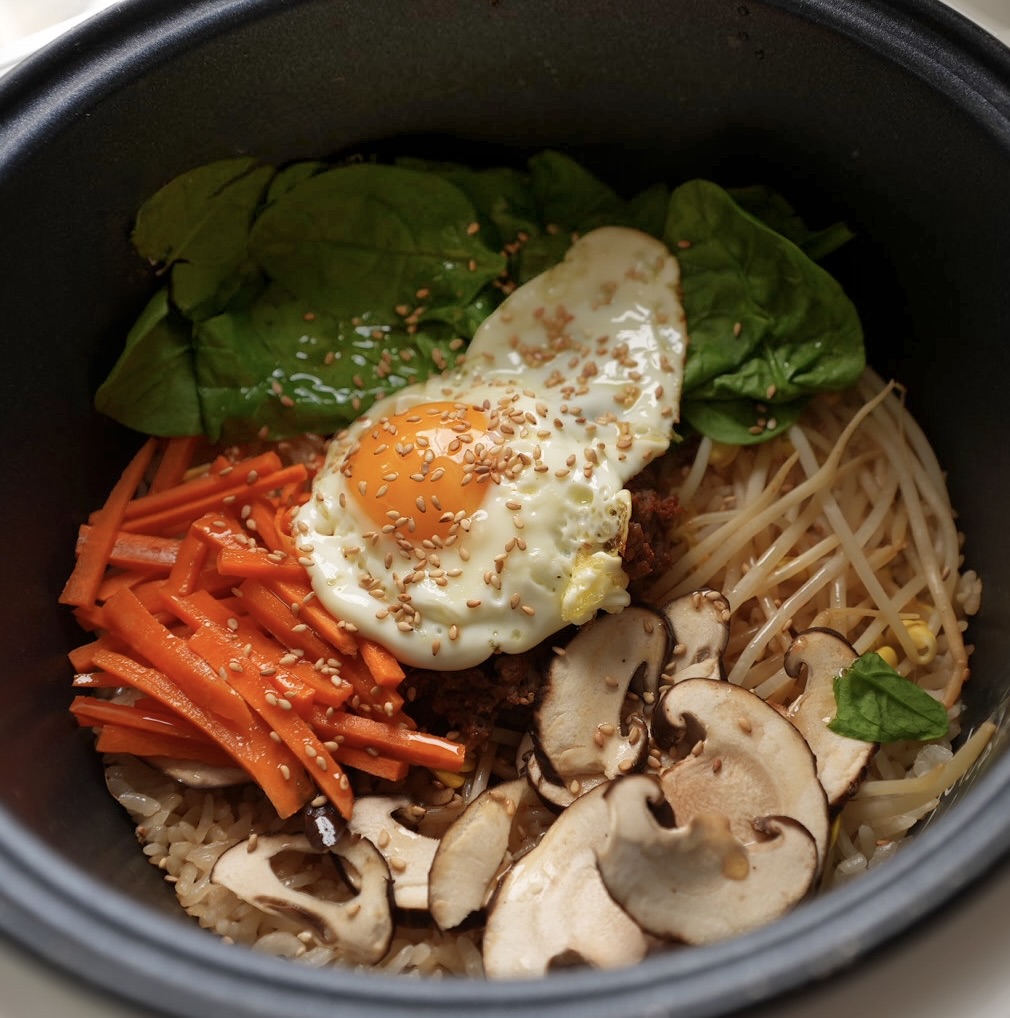
While it’s often prepared using a variety of stovetop methods, making bibimbap in a rice cooker brings convenience without sacrificing the essence of this iconic meal.
This simplified version still allows you to enjoy the satisfying combination of crispy rice, fresh vegetables, and savory toppings, but with fewer steps and less time at the stove.
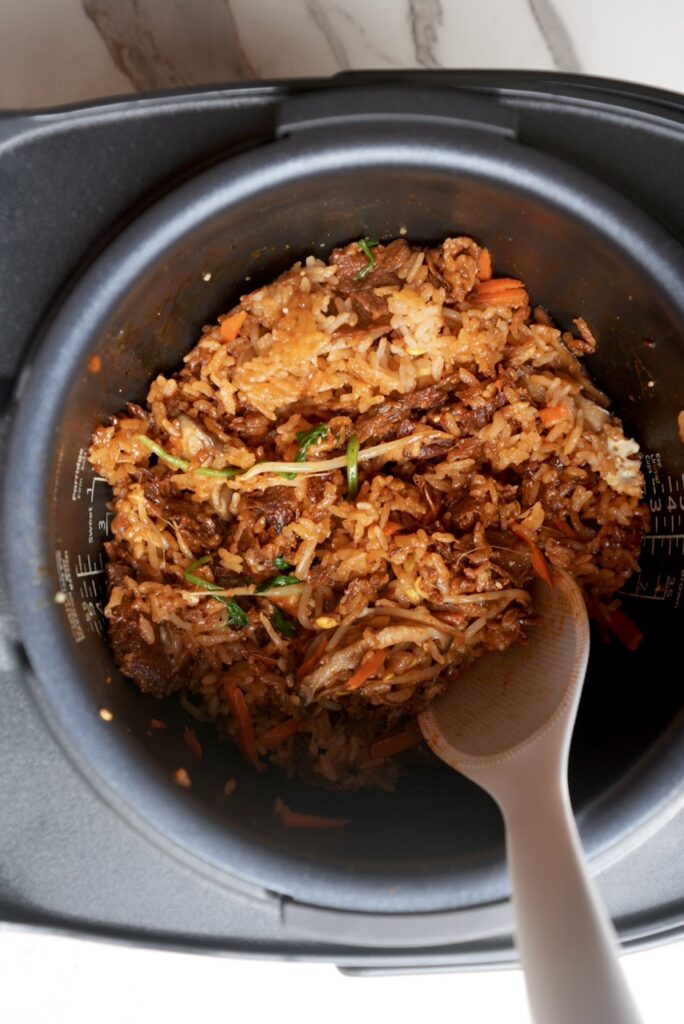
As the rice and meat near completion, you can layer vegetables on top, such as spinach, carrots, bean sprouts, mushrooms, and zucchini, allowing them to steam together with the rice (depending on the vegetable, it may be cooked from the beginning). Some rice cookers even have a sauté or “crispy rice” function that mimics the crunchy base typically achieved in a stone pot.
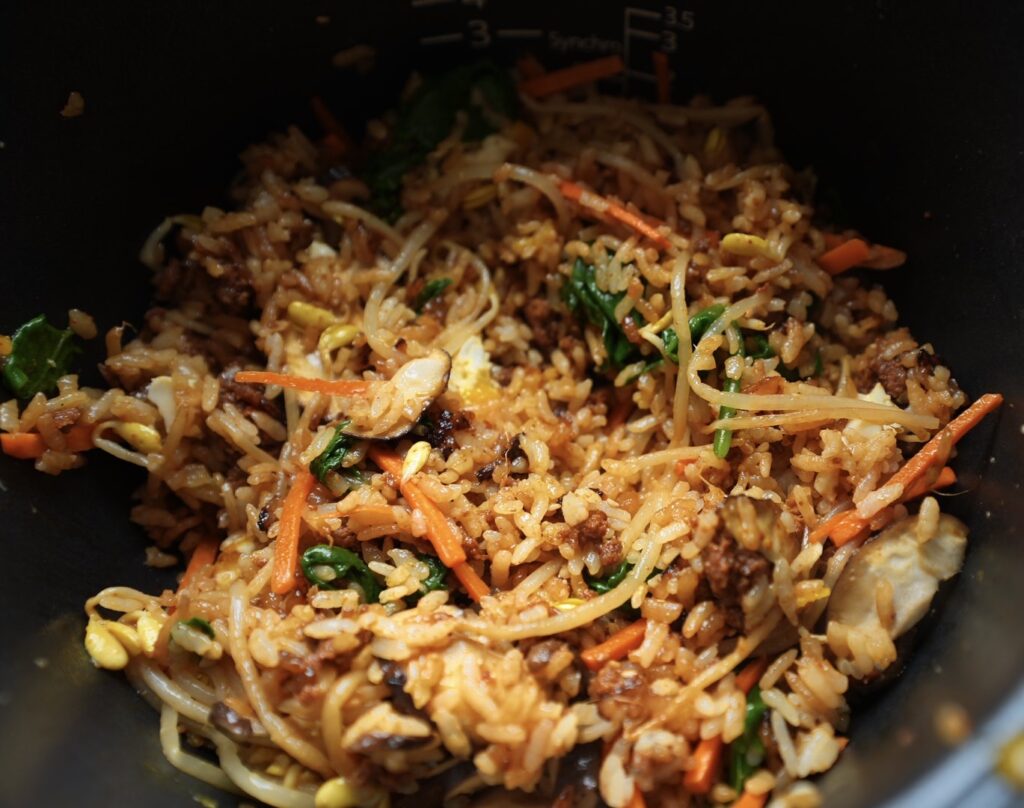
What Type of Rice to Use
Choosing the right type of rice can be confusing, especially with so many varieties available. In Korean and Japanese cooking, however, Japanese short-grain or medium-grain rice is almost always the go-to choice.
Short-grain rice, often labeled as sushi rice, is particularly prized for its soft and chewy texture, which pairs beautifully with traditional Japanese dishes. Medium-grain rice is a great alternative if short-grain isn’t available (I actually almost always use medium-grain myself because it’s generally cheaper where I live!). Both are ideal for recipes like this one, where the rice’s stickiness helps meld the flavors into every bite.
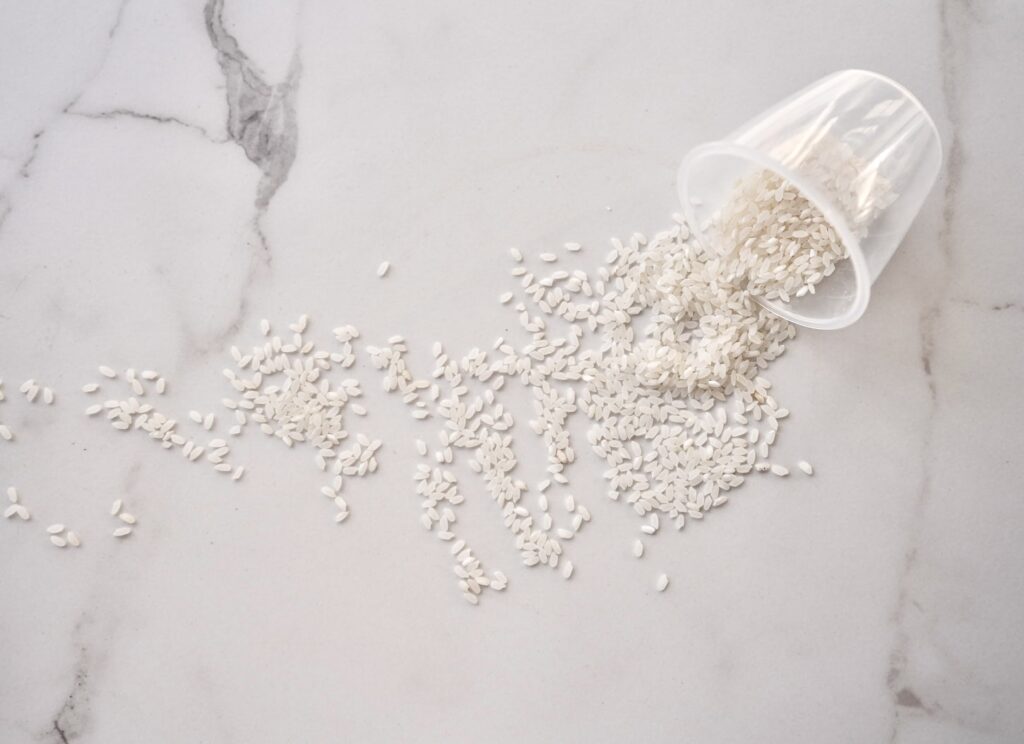
Recommended Rice Cookers
Do I need to have a fancy rice cooker? NO! Just like anything, generally, the higher the quality, the better. But you can make great rice in a cheap rice cooker, too!
Click the rice cooker photos to see my favorite rice cookers. I included a budget-friendly rice cooker I love! I use the Tiger 5.5-cup model shown. About 1/2 cup of Japanese short- or medium-grain rice makes 1 serving.
Key Features to Look For in a Rice Cooker:
- Timer and Keep Warm Function: Useful for planning meals ahead of time and keeping them warm until you’re ready to eat.
- Steaming Basket or Tray: Allows you to steam vegetables or cook other ingredients while the rice cooks.
- Multiple Cooking Functions: Ensure it has settings for steaming, slow cooking, and possibly even baking.
- Non-Stick Inner Pot: Makes cleaning easier and prevents sticking.
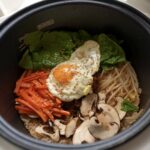
Korean Bibimbap (Mixed Rice) in a Rice Cooker
- Total Time: 30 minutes
Description
Bibimbap made in a rice cooker offers a simplified, convenient way to enjoy the classic Korean dish by cooking the rice, steaming the vegetables, and combining them with protein and gochujang in one easy step.
Ingredients
- 1/2 cup rice (I recommend Japanese short-grain or medium grain rice for the most authentic Japanese experience!)
- 1/2 cup bean sprouts
- 2 large shiitake mushrooms, thinly sliced (substitute for any other type of mushroom)
- 4–6 oz ground beef, uncooked
- 1 1/2 tablespoons gochujang (adjust according to spice preference)
- 1 1/2 tablespoons soy sauce (plus more for drizzling at the end)
- 1/2 teaspoon honey
- 1/3 cup carrots, julienned
- 1 cup spinach
- 1 teaspoon toasted sesame oil
- Toasted sesame seeds, for garnish (optional)
- 1 egg, sunny-side up (optional)
Instructions
- Begin by giving your rice a good rinse to clean it. Then pour it into the rice cooker, along with the appropriate amount of water. Be sure to follow the instructions for the correct water amount depending on the type of rice you are using. I used medium-grain rice, which requires 2 cups of water for every 1.5 cups of rice.
- To the rice cooker, add your bean sprouts and shiitake mushrooms. It’s traditional to place the vegetables in neat, separate sections around the bowl, creating a colorful presentation.
- To a medium-sized bowl, add your ground beef, gochujang, soy sauce, and honey. Mix to combine and thoroughly coat the beef.
- In the middle of the rice cooker, place your ground beef mixture right on top of the rice in the center. Turn on the rice cooker and cook for as long as you normally would when cooking rice (on my rice cooker, I just select the “Plain” rice button.
- When the rice is done cooking, add your carrots and spinach to the rice cooker, placing it in separate piles along the edges.
- Drizzle with sesame oil and garnish with sesame seeds. Serve with an egg on top and enjoy!
- Prep Time: 10 minutes
- Cook Time: 20 minutes
Nutrition
- Serving Size: 1

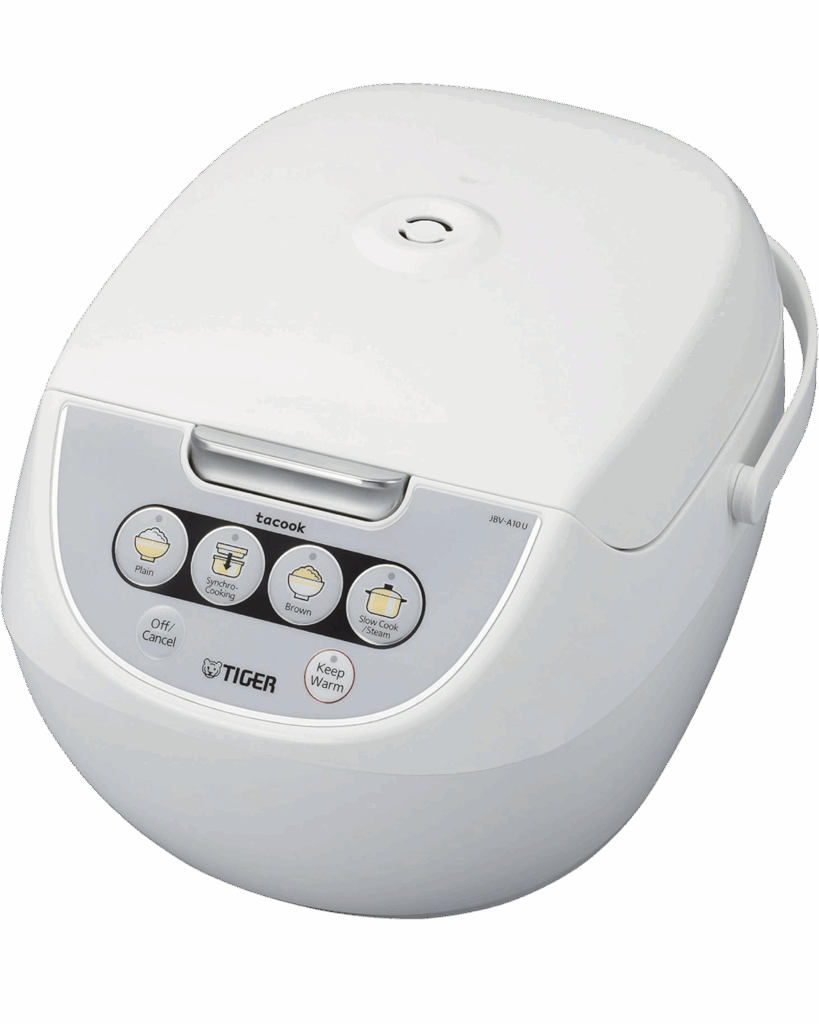
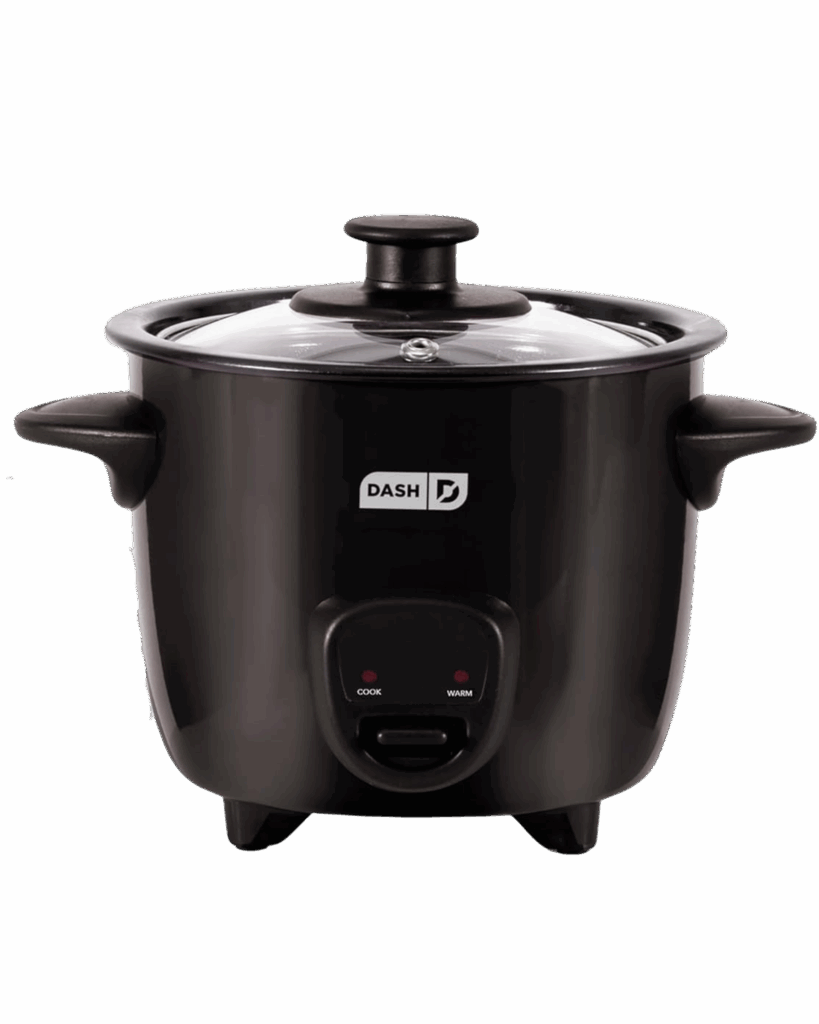



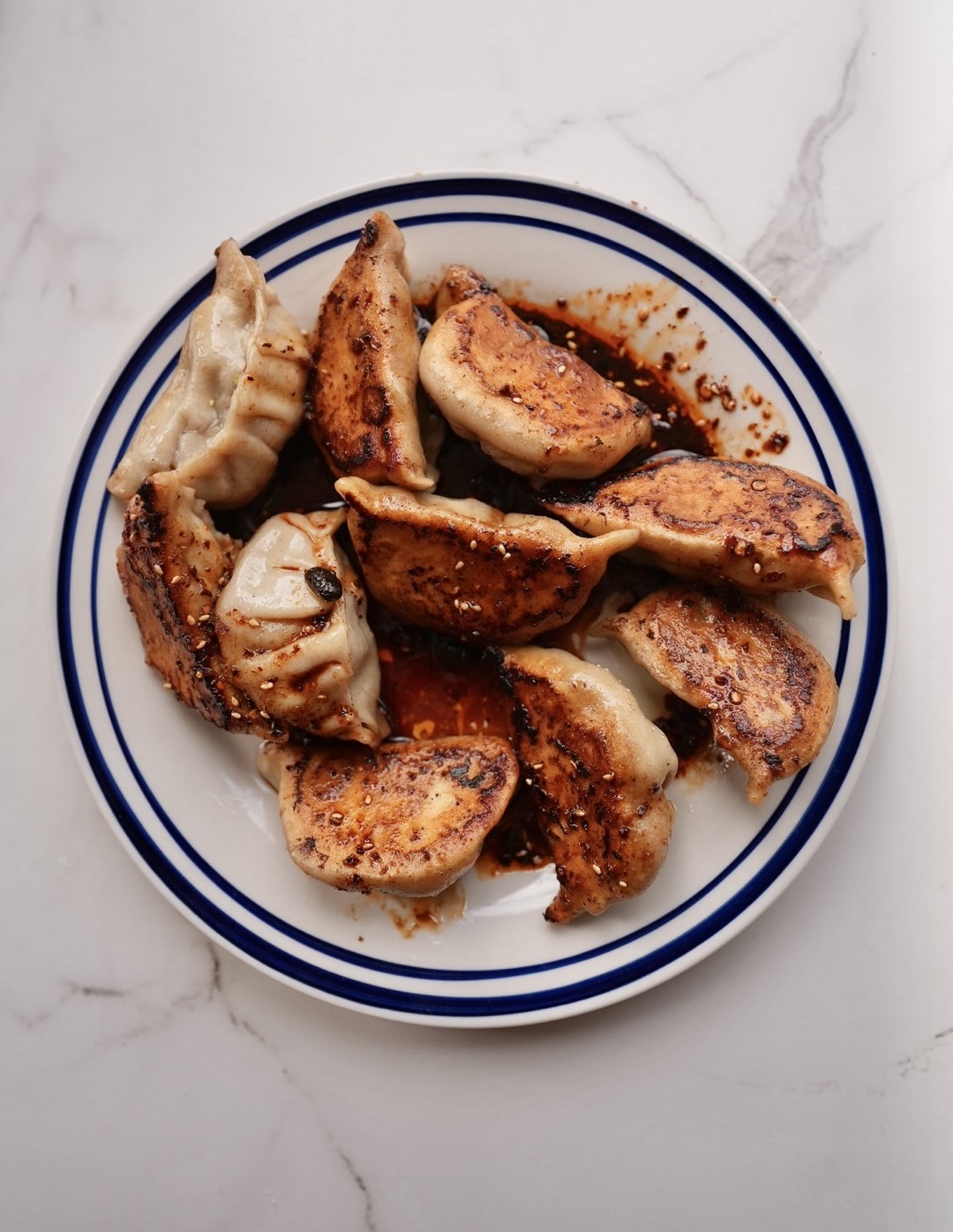
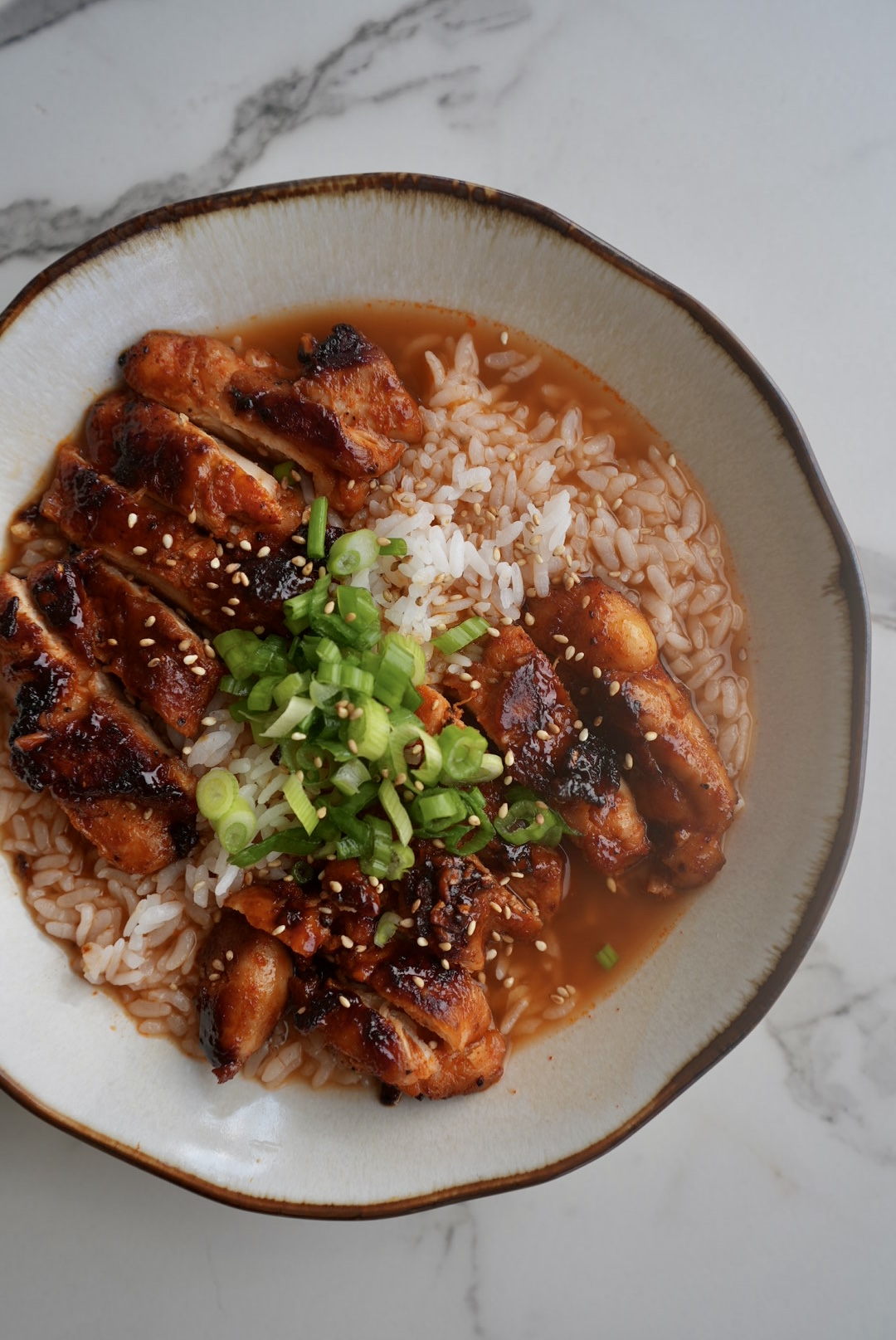
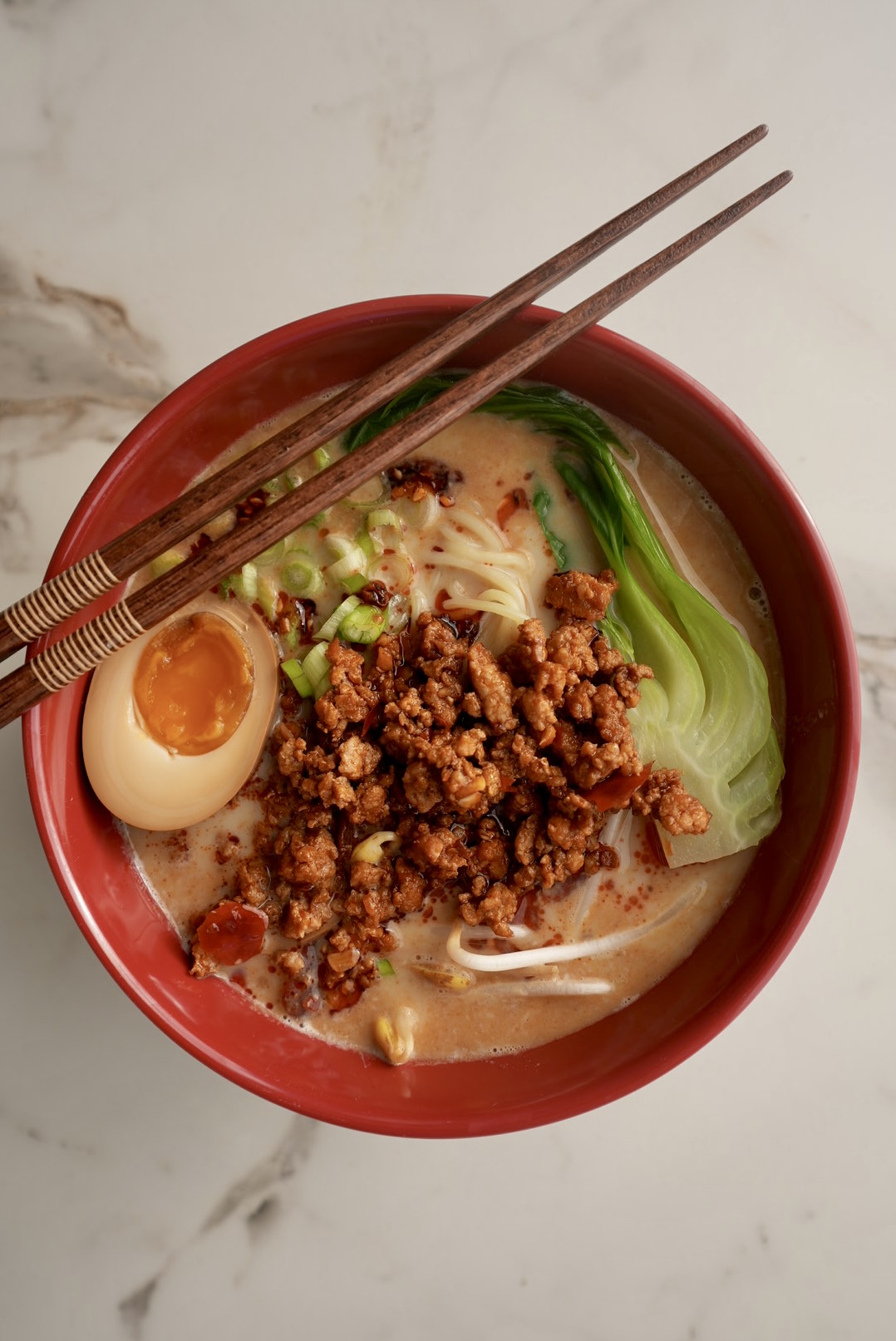
OH NO i poured too much water that the bibimbap becomes porridge :((((
Oh no! Hope you can try again!
This is my favorite rice cooker meal because it is so healthy! I’m surprised how well it turned out.
So many great veggies! Thanks, Amelia!
The rice developed just a bit of crispiness on the bottom. Loved the texture contrast.
I LOVE this recipe!!! I’ve made numerous times and it never fails. Thanks so much!!!
I’m so happy to hear that Wendy! Thanks for your sweet review 🙂
Loading up most of the ingredients in the cooker and taking it with me for a road trip meal!
Woohooo! That’s awesome!